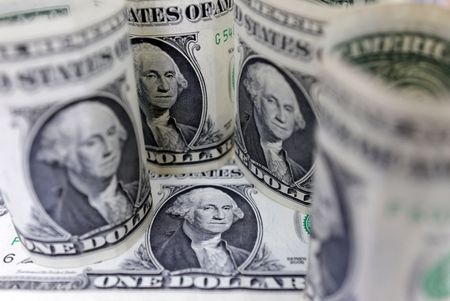By Colleen Howe and Siyi Liu
BEIJING/SINGAPORE (Reuters) – Oil prices extended declines on Friday under increased supply pressure from an OPEC+ output hike and the prospect of an Iranian nuclear deal, yet are heading for a second consecutive weekly gain due to easing U.S.-China trade tensions.
Brent crude futures lost 18 cents, bringing the price to $64.34 a barrel by 0622 GMT. U.S. West Texas Intermediate crude futures were down 21 cents at $61.41.
Both contracts fell more than 2% in the previous session following a selloff on the prospect of an Iranian nuclear deal.
U.S. President Donald Trump said the United States was nearing a nuclear deal with Iran, with Tehran “sort of” agreeing to its terms. However, a source familiar with the talks said there were still issues to resolve.
ING analysts wrote in a note that a nuclear deal lifting sanctions would ease supply risk, allowing Iran to increase oil output and find more willing buyers for its oil. That could result in additional supply of around 400,000 barrels per day, they said.
Despite the potential supply pressure, both Brent and WTI are up 0.6% so far this week. Sentiment got a boost after the U.S. and China, the world’s two biggest oil consumers and economies, agreed to a 90-day pause on their trade war during which both sides would sharply lower trade duties. The hefty reciprocal Sino-U.S. tariffs had raised fears of a sharp blow to global growth and oil demand.
Analysts at BMI, a unit of Fitch Solutions, maintained their forecasts for Brent to average $68 per barrel in 2025 and $71 per barrel in 2026, down from 2024’s $80 per barrel, citing the uncertainty of trade policy on the price outlook.
“While the 90-day cooling off period leaves the door open for additional progress on lowering trade barriers on both sides, the uncertainty on longer-term trade policy will limit price upside,” the analysts said in a research report.
Adding to market concerns was an expected surplus.
The International Energy Agency on Thursday hiked its 2025 global supply growth forecast by 380,000 bpd, as Saudi Arabia and other OPEC+ members unwind output cuts.
The IEA also projected a surplus for next year, despite a minor upward revision of its 2025 global oil demand forecast by 20,000 bpd.
Investors were also watching for signs of interest rate cuts by the U.S. Federal Reserve, which could bolster the economy and oil demand.
Earlier this week, data from the U.S. Energy Information Administration showed a bigger-than-expected jump in crude stockpiles, heightening demand concerns in the world’s biggest oil consumer.
(Reporting by Colleen Howe in Beijing and Siyi Liu in Singapore; Editing by Jacqueline Wong and Rachna Uppal)










